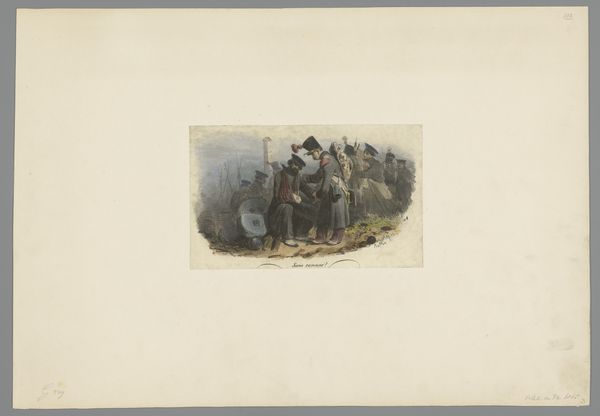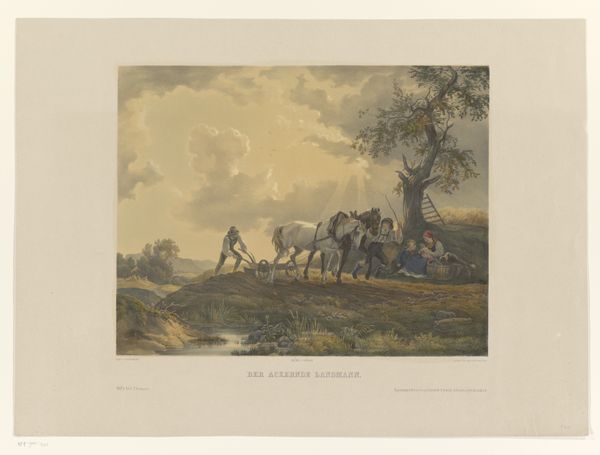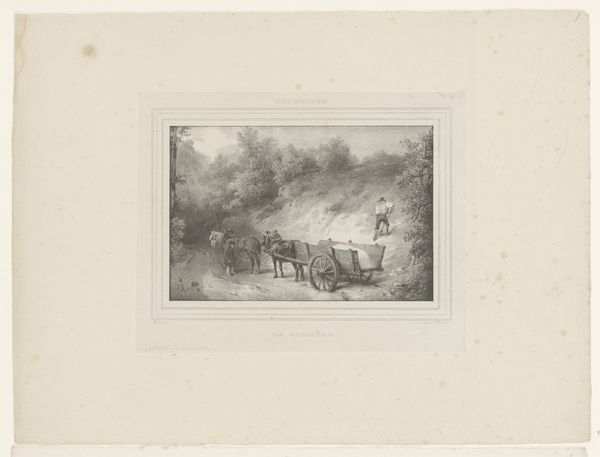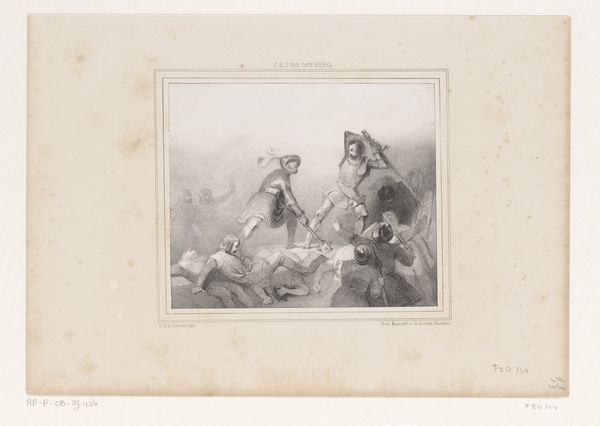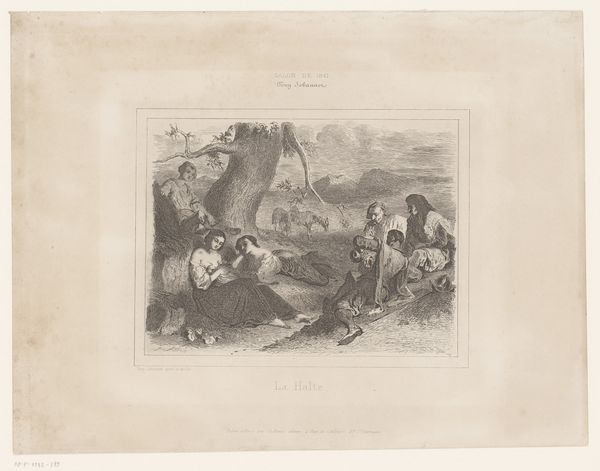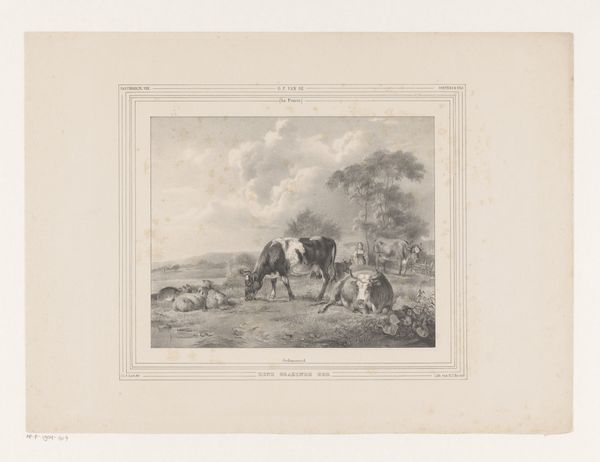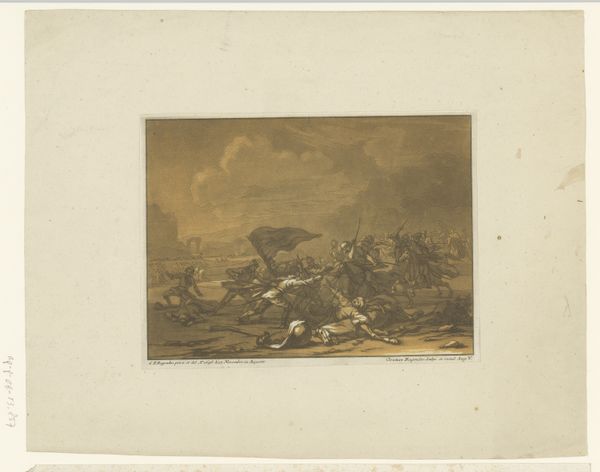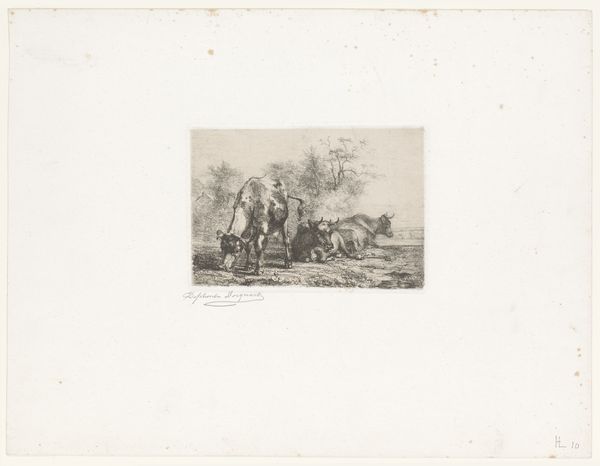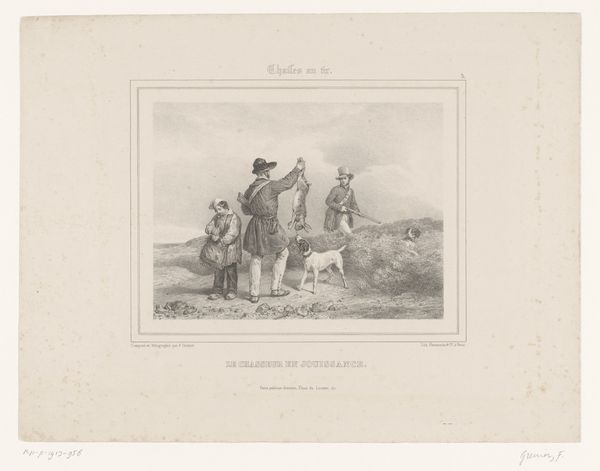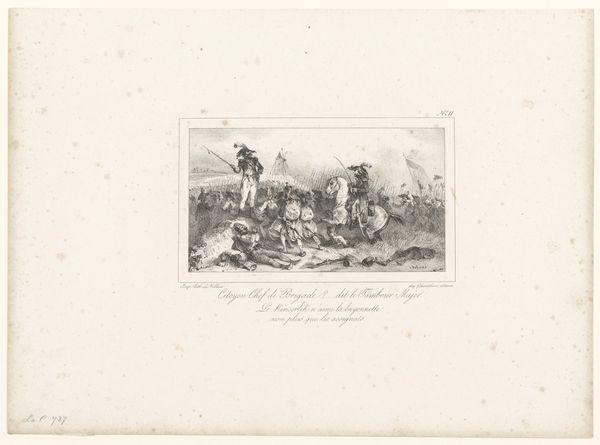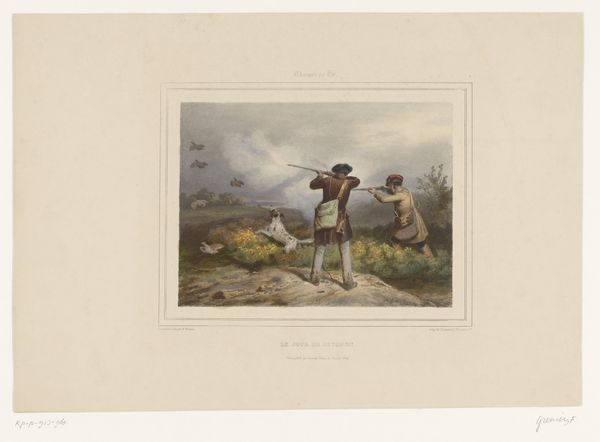
Dimensions: height 120 mm, width 172 mm
Copyright: Rijks Museum: Open Domain
Curator: "Ontvoering van de vrouw van een kolonist," or "Abduction of a Colonist's Wife," a print from somewhere between 1832 and 1887 by Ferdinand Delannoy, depicts a dramatic scene in a somewhat desaturated palette. Editor: It does seem quite romantic in the traditional sense, but… I’m immediately uneasy looking at it. How do you interpret this work? Curator: It's true; that “romance” quickly curdles. What strikes me is how the piece actively participates in the colonial narrative. Delannoy offers us a scene of violence framed as a heroic adventure. But, for whom is this heroic? How do we consider this piece with a postcolonial lens? Editor: So, you're saying it glorifies colonial violence? Curator: I wouldn't go so far as to say glorifies without closer examination of the social context surrounding its creation and consumption. The image seems to feed into the 19th-century's romanticization of the "frontier" while simultaneously reinforcing fears of the "savage" Other, but perhaps there were critical viewers. Whose perspectives are we centered on, here? The colonist whose wife has been abducted, or the abductor whose land has been invaded? Editor: I hadn't thought of it that way. Seeing it as more than just a historical depiction of one event helps me understand what’s at stake politically. How does Delannoy use imagery to create sympathy for one side versus another? Curator: Exactly. By examining how the figures are depicted—their clothing, their actions, the overall composition—we can start to unpack the power dynamics at play, which is important in historical study of romanticized "frontier" imagery. This type of nuanced consideration avoids simple praise or condemnation; what do we really know about "heroism?" Editor: That makes a lot of sense. Now I see that there’s more than initially meets the eye with these…romantic adventure tropes. It's a lot to think about.
Comments
No comments
Be the first to comment and join the conversation on the ultimate creative platform.
